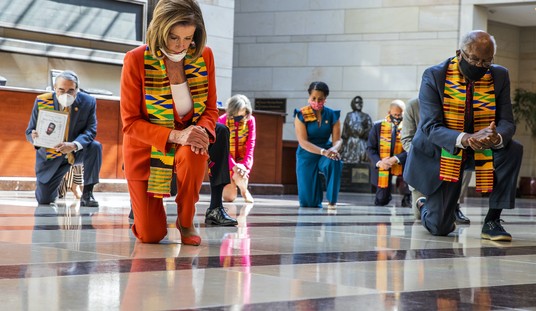The deranged former news reporter who killed two former colleagues and seriously wounded their interview subject before mortally wounding himself fit a pattern that law-enforcement officials have dreaded. It’s the “injustice collector,” who considers himself such a victim that he’s entitled to lash out violently at society. The murderer who killed Alison Parker and Adam Ward combined it with media savvy and social-networking access to turn himself into an even greater monster — and a model that may end up being repeated. CBS News interviewed counterterrorism expert John Miller, who says that the murderer wanted to be on network news, and got his wish:
New York City’s Deputy Police Commissioner for Intelligence and Counterterrorism John Miller called the shooter who killed journalists Alison Parker and Adam Ward on live TV a “classic injustice collector.”
“What was his injustice? He viewed himself as a guy who should be here on network television news and unfortunately he found the most terrible way to get there, and to be that lead story, and to be on it,” Miller said Thursday on “CBS This Morning.” …
“He exhibited all the classic behaviors, the pathway behaviors, which is all the preparation he went though to do this,” Miller said. “He didn’t throw this together the day before yesterday. He bought that camera, he practiced with it, he obtained the guns and so on — the following and stalking behavior, the identification of selective victims.”
Miller warned about the escalation of the massacre model with the attention paid to his murder videos:
“Since the Virginia Tech shooting, the FBI profilers — when that gunman sent the video tape and it was broadcast on a network TV broadcast — they said the next step is not to make a manifesto on video, the next step is to record the thing live while you’re doing it and to distribute that. And they’ve been worried about that for a long time, and here it is,” Miller said.
That is what made the use of images from those videos so reprehensible. The New York Daily News ran three images from the murderer’s video on their front page, including the moment that Parker realized she’d been shot — just before dying from it. The New York Post ran one image from the same video of the gun pointing at Parker. While the use of the WDBJ video is defensible from the point of view of having a live shot depict the murder, using the gunman’s video — which he intended to publicize his crimes — crosses a line.
Harry Siegel at the Daily News disagrees:
Understanding the anguish at losing two of our own, there’s something wrong with journalists, of all people, insisting that videos are too offensive to be seen at all, and demanding platforms remove them.
Complete this sentence: “Videos and pictures of murder or graphic violence should only be allowed to be seen when ____.”
Generally, this only gets answered, if at all, after some new horrific thing appears, and then with some twist on Justice Potter Stewart’s famous obscenity definition: “I know it when I see it.”
But there’s no way to know it if you never see it.
The idea that Twitter or any ad-supported social media site — not the virtual public commons they like to sell themselves as but rather, like shopping malls, spaces open for business — should decide what violence we can see is nuts.
Siegel frames this as a question of censorship and intervention, which is not altogether unreasonable:
After 12 years of ugly wars most Americans never saw much of — never mind blood, shots of soldiers’ coffins were banned from public view until a freedom of information suit forced their release — it’s high time we stop trusting gatekeepers to decide what violence is, or isn’t, acceptable.
This brave new world where we’re all publishers means we need to have — and actively enforce — our own personal standards of decency. Otherwise, we’ll keep getting the content we deserve, and demanding ever more protections from seeing it.
Let’s recall, though, that the murderer posted these on private sites like Facebook and Twitter, neither of which are news outlets, nor are they “public commons” or shopping malls. They are both sites run by private enterprise with rules and conditions for use. The murderer could have posted them to his own website, in which case the hosting service would have had to decide whether to intercede or not. Facebook and Twitter did not assent to that kind of publication, and their terms of use make it clear that they are not interested in it either. Since when do we have authority to demand publication on someone else’s property? Why don’t Facebook and Twitter get to have their own standards of decency? These are not public utilities, but private property.
Furthermore, this is just a little bit self-serving. Siegel’s paper got an avalanche of criticism last night when the Daily News promoted its front page on social media for exploiting the murderer’s footage for its own publicity, in essence giving the murderer exactly what he wanted — and incentivizing copycats to do the same. They could have pulled images from WDBJ’s video to make their point, but deliberately chose those images from the murderer’s perspective instead. No one argued that the Daily News should have had prior restraint exercised against it to stop that from happening, but that they should have exercised some self-restraint instead of playing into the murderer’s plan.







Join the conversation as a VIP Member